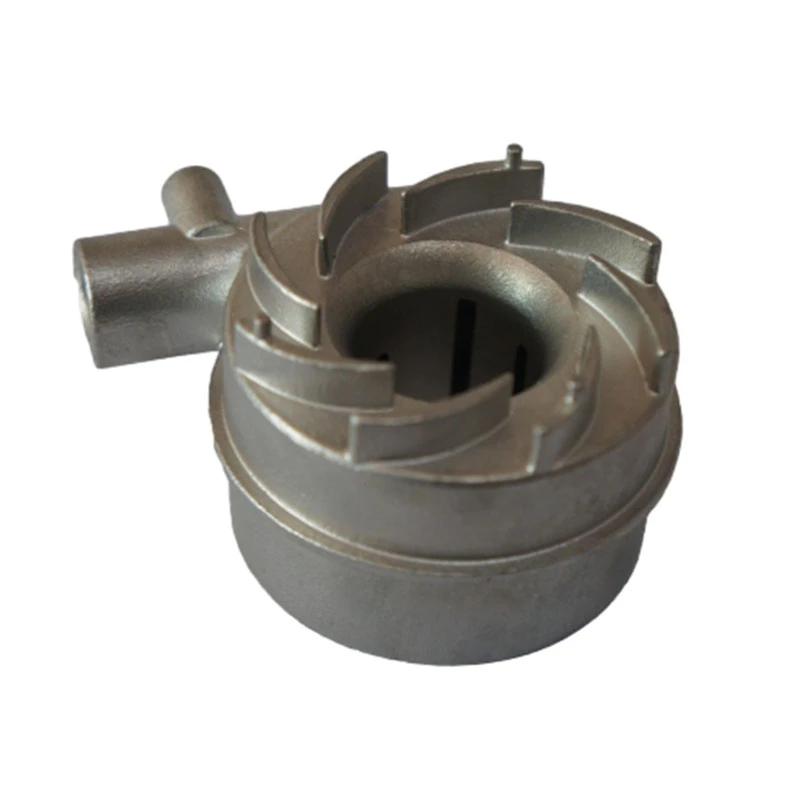what is a sand casting process
Understanding the Sand Casting Process
Sand casting is one of the oldest and most versatile metal casting processes, widely employed in various industries to create complex shapes and components. Whether for automotive parts, machinery, decorative items, or even large infrastructure projects, sand casting remains a preferred method due to its advantages in cost, material adaptability, and ease of use.
What is Sand Casting?
Sand casting is a process that involves creating a mold from a pattern, usually made of metal, plastic, or wood. The pattern is used to form a cavity in a mixture of sand, clay, and water that serves as the mold. Once the mold is constructed, molten metal is poured into the cavity to achieve the desired shape. After the metal solidifies, the mold is removed, and the casting is finished.
The Sand Casting Process Steps
The sand casting process can be broken down into several key steps
1. Pattern Creation The first step in sand casting is to create a pattern that reflects the final product’s dimensions. The pattern can be made from various materials, with metal patterns being the most durable and precise, while wood and plastic patterns are lighter and easier to manipulate.
2. Mold Preparation The pattern is placed in a mold box, and sand mixed with a binding agent (usually clay) and water is packed around it. The sand must be compacted tightly to ensure a precise mold cavity. After packing the sand, the pattern is removed, leaving a cavity that reflects the shape of the pattern.
3. Core Making (if necessary) For more complex shapes with internal cavities, cores are created. Cores are separate pieces made of sand that fit into the mold to form the internal features of the casting. These are typically attached to the mold before pouring the metal.
4. Pouring the Metal Once the mold is ready, molten metal is poured into the cavity through pouring channels. The choice of metal used depends on the properties required for the final product, such as strength, weight, and resistance to corrosion.
5. Cooling and Solidification After the metal is poured, it must cool down and solidify. The cooling rate can affect the mechanical properties of the casting; therefore, various techniques can be employed to control this rate, ensuring the strength and integrity of the final product.
what is a sand casting process

6. Mold Removal and Finishing Once the metal has solidified, the sand mold is typically broken away to reveal the casting. This can be done manually or through mechanical means. After the mold is removed, the casting often requires finishing processes like grinding, sanding, and surface treatment to achieve the desired surface quality and dimensional accuracy.
Advantages of Sand Casting
The sand casting process offers several benefits that make it an attractive option for manufacturers
- Cost-Effectiveness Sand casting requires less initial investment compared to other casting methods, making it ideal for small to medium production runs.
- Material Versatility It can accommodate a wide range of materials, including ferrous and non-ferrous metals, allowing manufacturers to select the best metal for their specific application.
- Complex Shapes The flexibility of the sand mold allows for the creation of intricate designs, which would be difficult or impossible to produce using other methods.
- Large Size Capability Sand casting can produce large components, making it suitable for industries that require sizable castings, such as automotive and heavy machinery.
Applications of Sand Casting
Sand casting is used across various industries. In the automotive sector, it is commonly used to produce engine blocks, transmission cases, and various other parts. In aerospace, sand casting is utilized for turbine housings and other critical components. Additionally, the art and design fields utilize sand casting for sculptures and custom jewelry, showcasing the versatility of this time-honored technique.
Conclusion
In summary, sand casting is a powerful and adaptable manufacturing process that continues to play a crucial role in the production of diverse metal components. Its advantages in cost, versatility, and capability to create complex shapes make it an invaluable method for manufacturers across multiple industries. As technology advances, sand casting techniques will likely evolve, but its fundamental principles will remain central to metalworking for years to come.
-
Precision Sheet Metal Stamping Manufacturer | Fast & ReliableNewsAug.01,2025
-
OEM Sand Cast Pump Valve Fittings - Baoding Hairun Machinery And Equipment Trading Co., Ltd.NewsAug.01,2025
-
Custom OEM Impellers | High Efficiency & PrecisionNewsAug.01,2025
-
OEM Sand Cast Pump Valve Fittings - Baoding Hairun Machinery | Customization, Quality AssuranceNewsAug.01,2025
-
OEM Sand Cast Pump Valve Fittings - Baoding Hairun Machinery And Equipment Trading Co., Ltd.NewsAug.01,2025
-
OEM Sand Cast Pump Valve Fittings - Baoding Hairun Machinery And Equipment Trading Co., Ltd.NewsJul.31,2025















